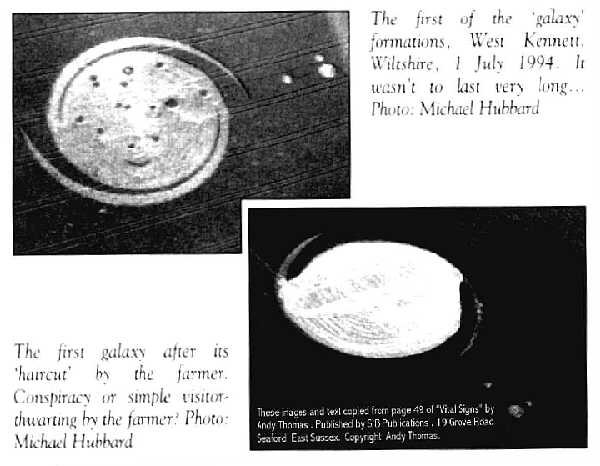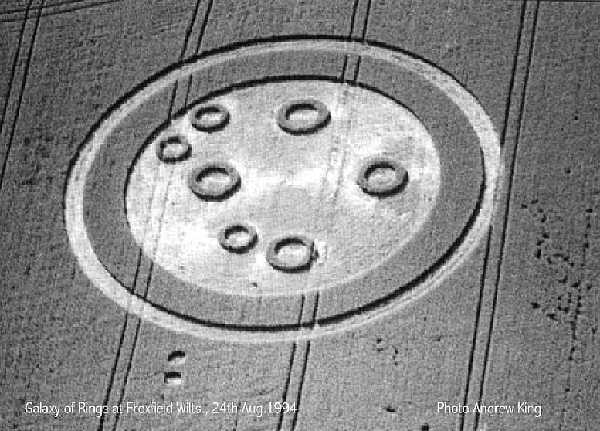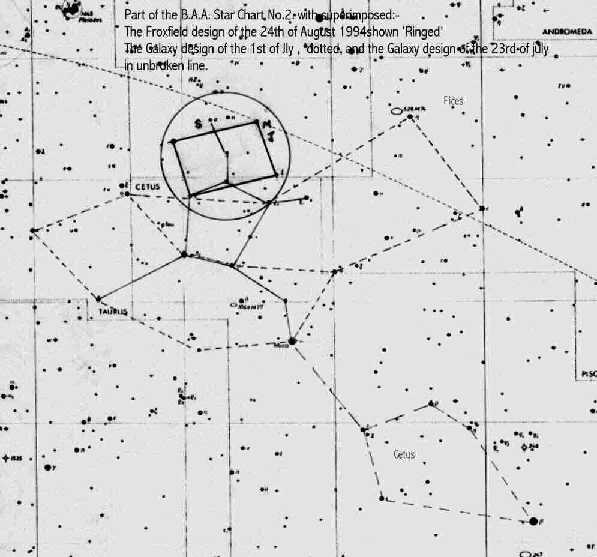
The Cetus Conjunction
Part 2.
In the months of July and August 1994 there actually occurred three crop formations which appear to have been designed to draw our attention to the Cetus Conjunction at that time still six years ahead. The West Stowell ‘Galaxy’ was the second of these and the most easily deciphered. The first was the ‘galaxy’ which appeared at West Kennet Wilts. On the 1st of July three weeks earlier. It consisted of an identical ‘winged spiral’ to the later one at West Stowell, and contained an obscure star group and possibly two ‘planets’. The design inside the spiral was obliterated within hours of its appearance. See Michael Hubbard’s before and after photos below.

Subsequent analysis has shown that this West Kennet star group identifies with the Cetus star group used in the later West Stowell formation. For example there are two parallel arcs comprised of nine stars and also a ‘smiley mouth’ shaped star group, which can all be clearly be located on the B.A.A. Star Chart (see below).
However, the ‘planet’ positions seem to have no discernible meaning, which could indicate that ‘they’ made an error in execution of the formation and subsequently aborted the ‘message ‘ themselves?.
The third of the star ‘messages’ is the Froxfield crop formation of the 24th of August 1994, which became known as the ‘Galaxy of Rings’. Photo by Andrew King.

This Froxfield ‘message’ is couched in a different format and appears to be intended as a confirmation of the West Stowell message. It is a very accurate representation of the Cetus Conjunction again but can only be recognised as such if one has prior knowledge of the event and the relative positions of the three planets, i.e., the three smaller of the seven rings. Given this insight it is a short step to
realizing that the four larger rings, not discs this time, are ‘stars’. They can be located precisely on the B.A.A. Star Chart and they align accurately with the equally true positions of the three planets, as they will be on the Ecliptic in early April this year. The relevant portion of the B’A.A. Chart below shows how each of the three crop formations locates in the region of the Cetus constellation.

A full report of how the Cetus discoveries unfolded over a period of three months was published in the November 98 edition of “SC” The Sussex Crop Circle Research Journal, Editor Andy Thomas.
Jack Sullivan February 2000.